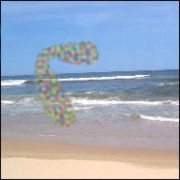| Aura | |
|---|---|
 | |
| Artist's depiction of zig-zag lines experienced as part of a migraine aura phenomenon | |
| Specialty | Neurology, neuro-ophthalmology |
| Types | Scintillating scotoma |
| Differential diagnosis | Persistent aura without infarction, retinal migraine, visual snow |
An aura is a perceptual disturbance experienced by some with epilepsy or migraine. An epileptic aura is a form of minor seizure. [1]
Contents
- Migraine
- Seizures
- Examples
- Visual changes
- Auditory changes
- Other sensations
- See also
- References
- External links
Epileptic and migraine auras are due to the involvement of specific areas of the brain, which are those that determine the symptoms of the aura. Therefore, if the visual area is affected, the aura will consist of visual symptoms, while if a tactile sensory one, then tactile sensory symptoms will occur.
Epileptic auras are subjective sensory or psychic phenomena due to a focal seizure, i.e. a seizure that originates from that area of the brain responsible for the function which then expresses itself with the symptoms of the aura. It is important because it makes it clear where the alteration causing the seizure is located. An epileptic aura is in most cases followed by other manifestations of a seizure, for example a convulsion, since the epileptic discharge spreads to other parts of the brain. Rarely it remains isolated. Auras, when they occur, allow some people who have epilepsy time to prevent injury to themselves and/or others when they lose consciousness.




